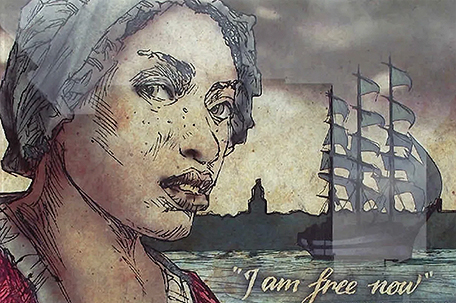
ABOVE PHOTO: The artistic rendition of Ona Judge is from a plaque at the President’s House Monument at 6th and Market Street. (Image courtesy: Beyond the Bell Tours)
Beyond the Bell Tours: Helping to highlight Philly’s great women:
Beyond the Bell Tours is inspired by the stories that go untold in Philadelphia. The tours are designed to include and to share the incredible stories of women, people of color, queer folks and indigenous peoples who have made Philadelphia the city that we know and love. The tours have always been and will always be a love letter to the city of Philadelphia. Founded in 2018, Beyond the Bell is now proudly a top-ranking tour company in the Philadelphia area. The SUN is pleased to feature the incredible story of Ona Judge, one of the subjects on the Beyond the Bell Tours schedule.
By Alison Cooper
WWW.BEYONDTHEBELLTOURS.COM
Schools throughout the nation teach our Founding Fathers with glowing admiration. Take George Washington. What are the images or stories you associate with the first president of the United States? You might imagine him bravely crossing the Delaware River, an emblem of American patriotism. Perhaps you think of his wooden teeth. Or maybe you recall the story of how as a child he chopped down a cherry tree and when questioned about his misdeed, he declared “I cannot tell a lie.”
But what we’ve been taught about this historic man was skewed, an oversimplified, patriotic portrait. In all you might hear about our nation’s first president, you will rarely hear about his status as a slave-owning man.
The paradox of our first presidents owning slaves is one that embodies the paradoxes of American freedom in the time of our founding fathers.
Imagine instead a more truthful telling of our nation’s first president by learning the truth of our Founding Father’s slave ownership alongside a captivating tale of one woman’s escape from slavery and her lifelong pursuit of freedom.
We rarely, if ever, read of Ona Judge’s name in our history textbooks, even though her story is far more interesting than the myths of Washington (some that are just too good to be true).
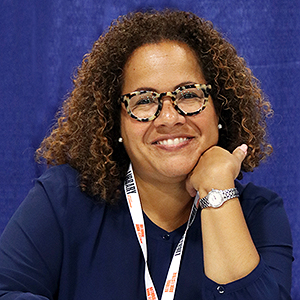
How did one woman run away from the most powerful man in the nation? And how did she manage to remain free for the rest of her life, despite his endless efforts to return her to slavery? And how did Philadelphia play a key role in Ona’s escape?
Erica Armstrong Dunbar, an incredible historian out of Rutgers who devoted years to researching writing to reveal the story of Ona to the public, writes in her book “Never Caught: The Washingtons’ Relentless Pursuit of Their Runaway Slave Ona Judge” that even though Ona lived as a fugitive for the rest of her life, she wanted her story to be shared. This is the story of how Ona escaped enslavement by the most powerful family in the country and found liberation.
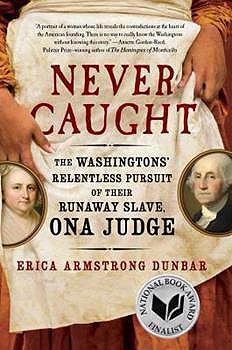
Ona’s origin story
Born in 1773 to Betty, one of George and Martha Washington’s slaves, and a white indentured servant, the tailor Andrew Judge (who made Washington’s iconic military uniform). Because their relationship is not well documented, Erica Armstrong Dunbar speculates about its depth, nature, and whether it was consensual. Perhaps Betty saw freedom in Andrew. After four years of servitude, he would become a freedman with the ability to buy back Betty and their children. Their relationship may have even been romantic.
That being said, though they both belonged to the Washingtons either through enslavement or indentured servitude, the power dynamic between Andrew and Betty was imbalanced. Andrew Judge had power over enslaved Betty as a white man with the potential to use his “power to command or force a sexual relationship.”
“What we do know,” historian Erica Armstrong Dunbar writes, “is that their union, whether brief or extended, consensual or unwanted, resulted in the birth of a daughter.” That daughter was Ona Judge.
Enslavement under the Washingtons
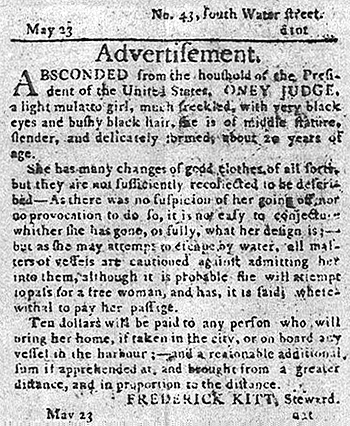
Because she was born to an enslaved woman, Ona’s fate was sealed. She would work for the Washingtons at the plantation Mount Vernon in Virginia. Once she became of working age at 10-years-old, Ona began working tirelessly for Martha Washington. She became one of Martha’s prized bondwomen.
When George Washington was elected president, Ona was one of the handful of slaves taken to New York City, the new capital. Both she and her half-brother Austin were separated from their mother Betty, a common and cruel practice that fractured an innumerable amount of families during slavery.
In New York, Ona sealed her position as Martha’s top servant, a role that loaded her with even more work and responsibility. Her responsibilities were tremendous. From tailoring and laundering the First Lady’s clothing to caring for their two grandchildren to preparing their home for the daily social events and much more, Ona went above and beyond for Martha Washington.
But life in the North was different from that on the plantation in Virginia. Stirrings of abolition had already started in New York City, Philadelphia, and beyond.
“Freedom and opportunity,” explains Erica Armstrong Dunbar, “were at play in many Northern states that boasted growing free black populations.” Some states, such as Massachusetts and Pennsylvania, were even passing abolition laws allowing slaves emancipation and/or restricting the ownership of slaves.
With the move to New York City, Ona would see a different world, one where the dream of living without enslavement was a reality.
Glimpses of freedom in Philadelphia
After a year and a half of living in New York City, the Washingtons and their slaves returned to Mount Vernon. Though just 16-years-old, Ona had already experienced a rich world outside of the plantation, one where black men and women could live free.
We can only speculate what impression returning to the South might have had on Ona. On one hand, she was reunited with her family, but on the other, the plantation was far removed both in distance and ideology from what she saw in New York City. And Ona’s vision of freedom would not be forgotten.
While the Washingtons vacationed, an important political debate was coming to a head. For years debates between the North and South had been brewing over the location of the capital. Finally, a resolution was passed. The capital of the nation would move to Philadelphia.
Work done by enslaved men and women soon started on the new capital. Meanwhile, the Washingtons and a group of nine slaves, including Ona Judge, took up residence at the President’s House located at 6th and Market.
The mansion became a place of governance for the next decade.
During her six years in Philadelphia, Ona watched the free black population thrive, building communities and businesses of their own. The city was transforming into a hopeful future for previously enslaved people.
The city’s enslaved population was changing due to the growing abolition movement comprised of newspapers and groups such as the Pennsylvania Abolition Society who helped emancipate enslaved men, women, and children. In fact, during her time in Philadelphia, Ona was one of 100 enslaved peoples compared to the 6,000 freed Blacks who lived in the city during that time, according to Gary Nash and Jean R. Soderlund’s book “Freedom By Degrees: Emancipation in Pennsylvania and its Aftermath” making Ona part of a minority group within the city.
Antislavery movements in the city put pressure on the slave-owning first family. According to the Act for the Gradual Abolition of Slavery, all adult slaves brought to Pennsylvania for more than six months must be emancipated. To dodge the law, every six months, the Washingtons transported their slaves back to Mount Vernon.
More than ever before, Ona was closely monitored by the Washingtons out of fear of losing her due to the Act for the Gradual Abolition of Slavery or her own escape. And yet, as the family prepared to travel to Mount Vernon, Ona was nowhere to be found.
In next week’s issue of the SUN: Part Two of the incredible story of Ona Judge.






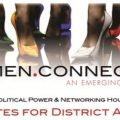










Leave a Comment